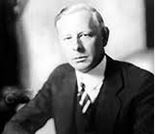Jesse Lauriston Livermore: The Boy Plunger
 Playing the stock market in order to make a bundle is not a pursuit deemed suitable for the faint of heart. For every story starring an investor who struck it rich, there are countless others of poor souls who lost everything but the shirt off their back. And then there was Jesse Lauriston Livermore who made and lost a fortune on Wall Street several times over.
Playing the stock market in order to make a bundle is not a pursuit deemed suitable for the faint of heart. For every story starring an investor who struck it rich, there are countless others of poor souls who lost everything but the shirt off their back. And then there was Jesse Lauriston Livermore who made and lost a fortune on Wall Street several times over.
The Great Bear of Wall Street – or the Boy Plunger – was a master at short selling stocks. He made his first millions shorting stocks on the eve of the Panic of 1907 when share prices tumbled over 50% as liquidity was sucked out of the system after a failed attempt by the United Copper Company to corner the market. When the Knickerbocker Trust Company – New York’s third largest trust which had financed the ill-conceived scheme – collapsed, panic spread across the nation.
Curiously enough, the crisis was exacerbated by the growth of unregulated bucket shops where investors could place bets on the movements of stocks without actually buying them – choking liquidity even further. It was precisely at these shops that Jesse Livermore started trading at age 14. Within a year he had accumulated over a thousand dollars ($23,000 in today’s money) and a little while later was banned from most bucket shops whose proprietors refused to accept his unfailingly accurate bets.
“The game of speculation is the most uniformly fascinating game in the world. But it is not a game for the stupid, the mentally lazy, the person of inferior emotional balance, or the get-rich-quick adventurer. They will die poor.”
– Jesse Lauriston Livermore
Mr Livermore was a day trader way before the slightly derogatory term was coined. He left later generations of security traders a basic philosophy that places heavy emphasis on increasing the size of any given position that is headed in the right direction while cutting any losses immediately and ruthlessly.
Mr Livermore would later expand on his securities trading practices further in a book still considered mandatory reading at business schools in the US and elsewhere – How to Trade in Stocks: The Livermore Formula for Combining Time Element and Price (McGraw-Hill, ISBN 978-0071469791).
Jesse Livermore also had a hand in the writing of the book Reminiscences of a Stock Operator (John Wiley & Sons, ISBN 978-0470481592) by his journalist friend Edwin Lefèvre who may, as is widely suspected, have regularly planted stories in the press with an eye to influencing the market and allowing for lucrative day trades.
Mr Livermore knew little if any caution when trading on a hunch, a planted story or a nugget of insider information: He’d go all-in, kitchen sink not excluded. This is the only way to either make a fortune, or lose one, trading stocks. He did both. Caution and moderation are enemies of success. However, this does not imply that traders should act irrationally.
In fact, Mr Livermore lost the $3 million he made on the back of the Panic of 1907 on a cotton trade gone awry. He violated many of his own prescriptions for success: He listened to the advice of others and kept adding funds to a losing position. In the years following the crash, Jesse Livermore would continue to lose money in the now mostly stagnant market. By 1912, he was a million dollars in debt and declared bankruptcy.
His fortune turned with the World War I bull market and the downward trend that followed. Not only did his creditors get paid, Mr Livermore recouped the millions he had lost and went on to live to good life with fully-staffed mansions in the US and Europe and a private yacht to shuttle back and forth across the Atlantic. To keep him company, Jesse married Dorothy, one of the Ziegfeld Follies showgirls and 23 years his junior.
By 1929, Mr Livermore saw a market afflicted by the same ills that caused the Panic of 1907. He moved fast and started shorting stocks left, right and centre. He kept adding to his positions as share prices continued their slide. The strategy paid off handsomely. While nearly everybody lost huge amounts of money with the Wall Street crash of 1929, Jesse Livermore made a cool $100 million (today $2.3 billion) after raking in his short-selling profits.
In the years following the Crash of 29, Jesse yet again lost most of his money. Precisely how he squandered his fortune is still one of Wall Street’s enduring mysteries. By March 1934, Jesse was declared bankrupt and suspended from trading.
A year earlier, Dorothy had filed for divorce. Jesse then married 38 year old Harriet Noble who had already survived four husbands. They all committed suicide and Jesse’s fate was to prove no different. In November 1940, Jesse shot himself in the cloakroom of the Sherry Netherland Hotel in Manhattan leaving a hand-scribbled note to his wife: “I am a failure and tired of fighting. There is no other way out.” i
You may have an interest in also reading…
Bernard Yeung: Global Citizen at NUS
It seems rather appropriate that Prof. Bernard Yeung, dean of National University of Singapore Business School is truly a global
Islamic Development Bank: Member Country Partnership Strategy
The Member Country Partnership Strategy (MCPS), introduced in 2010 as an outcome of the Islamic Development Bank Reform Agenda, is
Otaviano Canuto, World Bank: Overlapping Globalisations
Current technological developments in manufacturing are likely to lead to a partial reversal of the wave of fragmentation and global



















































































